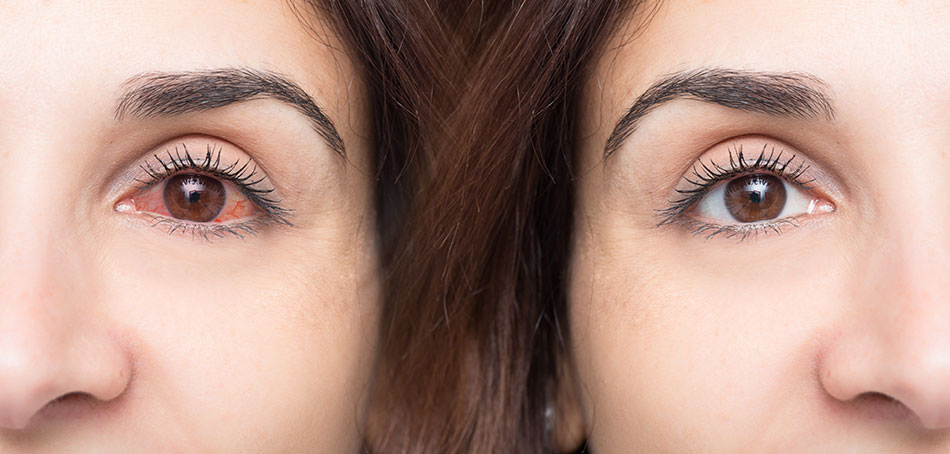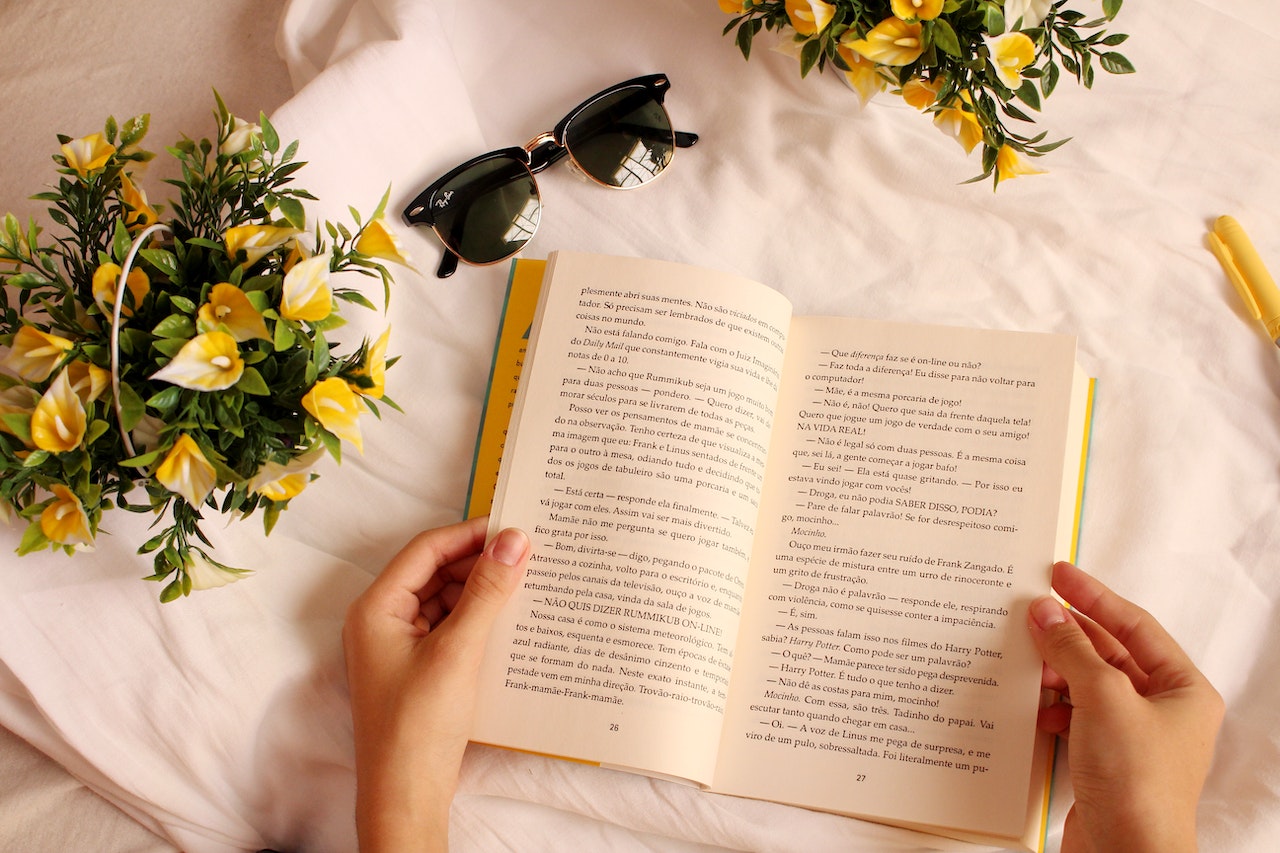We are told since childhood not to read in dim light or lying down. In fact, the answer is not that obvious as it might seem. We have studied the opinions of scientists and physicians about what conditions really adversely affect our eyesight.
Let’s dive in!
Reading in the dark is harmful

There are almost no studies on the harm of reading in low light conditions (and the level of light has yet to be somehow measured). Most scientific experiments focus on the question of the distance of the book or screen from the face. The general rule is: the closer they are, the worse for vision. It is best to keep a distance of 25 cm.
Our eyes are capable of adjusting to different levels of light. When you are trying to see something in semi-darkness, the pupils dilate to allow more light to reach the retina. The eyes adapt quickly, but some people may experience headaches due to muscle tension. Despite this possible unpleasant effect, there is no evidence that it affects the eye muscle in any way: it is elastic, and the pupil returns to its normal state as the light flux increases.
What factors are most responsible for the occurrence of myopia is a complex question. At this point, it is known that a significant role is played by heredity. Children with at least one parent suffering from myopia are 1.5 times more likely to encounter this problem.
The environment also affects our vision. According to recent studies, it is beneficial to be outdoors every day to prevent myopia. Doctors recommend that children spend two hours outdoors a day or at least 10 hours a week. However, while scientists can not say exactly what environmental factors have a positive effect on the state of vision. Perhaps it depends on the heterogeneity of the surrounding landscape, which helps train the eye muscle. Maybe the characteristics of the light spectrum of sunlight are important. It is also possible that there is a simpler explanation: children have less contact with gadgets at this time. Or all of the above factors matter. In short, this is a subject for further, closer research.
Regular walks are unlikely to get rid of myopia in adults, but you should not keep a book or a gadget close to your face, so as not to worsen vision.
Blue light hurts our eyes

Lately, many technology and lifestyle publications have been full of remarks about how blue light affects our eyes. Let’s find out what causes this fear.
It’s important to understand that we see blue light everywhere. The sun is its main source, so we get the biggest dose of blue light on the street. But now there are a lot of artificial light fixtures with blue light – fluorescent and LED lights, LCD monitors of computers, laptops, smartphones, and TV. The amount of high-energy visible light these devices emit is insignificant compared to the doses coming from the sun. The question is how much time you spend in front of the screen and how close you are to it.
The human eye does a pretty good job of blocking out harmful ultraviolet radiation (which is partially in the blue light range): less than one percent of UV rays reach the retina if you don’t wear sunglasses. While we are protected from UV radiation, we are much less protected from high-energy light, which can have an adverse effect on the eyes. And LED lights produce it in noticeable amounts.
As laboratory studies have shown, exposure of the retina to excessive amounts of blue light can cause damage to light-sensitive cells. Which causes changes resembling the symptoms of macular degeneration.
Blue light can also have positive effects: certain wavelengths improve mood, attention, memory, and cognitive functions. That’s one of the reasons we like being in the sun.
But if we spend too much time in front of the monitor before going to sleep, it can lead to disturbance of circadian rhythms, i.e. the natural sleep/wake cycle. That’s why it’s so important to turn off the computer and put your phone away a couple of hours before you go to bed – and, yes, you shouldn’t read at night.
Reading in bed affects your spine
Reading while lying in bed requires a different body alignment than when sitting. You can read while lying on your back or sideways. Your spine may be not straight while lying on your side, and the extra strain on the back can lead to pain or even injuries such as slipped discs. While lying on your back, your neck may not be supported and it may result in a headache and sore neck muscles. 40% of Americans read while lying on their daybeds, this is why it is a smart idea to invest in a decent mattress for your daybed as well as in your regular bed. Also, you are advised to use platform pillows and additional cushions for extra support while reading. These tips will help you to avoid a stiff neck and a sore back if you decide to read in bed before going to sleep.
Reading from a screen is harmful to the eyes

In addition to written above about the blue light and the distance to the monitor, we need to consider a few more issues about reading from the screen.
Despite the fact that there is no direct threat to vision when reading from the screen, for those who spend a lot of time in front of a computer, there is a syndrome of tired eyes (asthenopia), the muscles are strained beyond normal. Here are some recommendations for avoiding asthenopia:
- Try to direct light sources so that there is no glare and reflection on the screen;
- adjust the brightness of the monitor itself;
- Take a break from the computer every hour;
- Blink more often to prevent dry eye syndrome.
Scientists are still arguing about whether paper books or computers are better. There has been so much research on the subject that Virginia Clinton, who studies the relationship between education and psychology, did a meta-study. She collected data from 33 previous studies conducted between 2008 and 2018. All respondents were English-speaking and had received a regular education. Clinton found that readers of paper books found it easier to absorb information from popular science articles, while the perception of fiction was not affected by the medium. In addition, those who chose paper were better able to judge how well they absorbed information from the book. The average speed of reading from a screen and a physical book was actually equal. Clinton concluded that digital readers tended to read more easily.
Reading while lying in bed may have its cons
Not only does the distance from your face to the book matter, but also the angle of reading. An angle of 60 degrees is considered optimal. Those who wear glasses can place the book a little lower. When reading lying on your back you are forced to direct your gaze quite high, which increases the pressure on the eye muscle. This can cause asthenopia, symptoms of which include dizziness, blurred vision, discomfort in the eye, red eyes, etc. Fortunately, these symptoms go away as soon as you stop overexerting your eyes and read again while sitting in a comfortable position.



